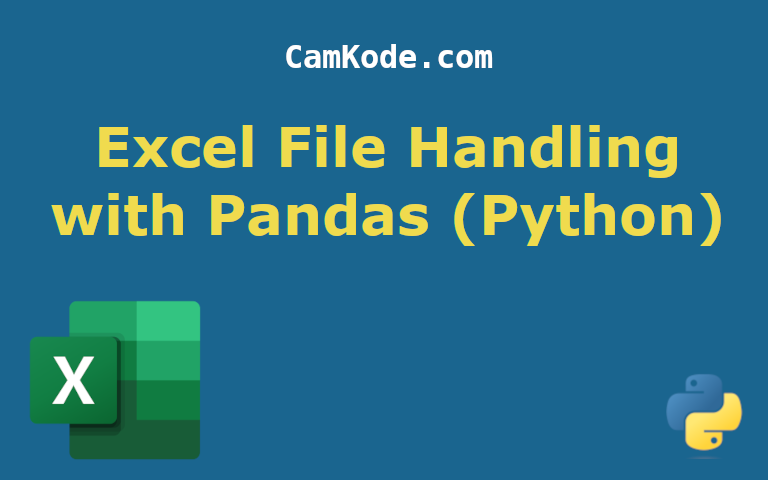Simplifying Excel File Handling in Python with Pandas
Posted by Kosal

Python, with its rich ecosystem of libraries, offers seamless integration with Excel files, allowing users to manipulate spreadsheet data effortlessly. Among these libraries, Pandas stands out as a powerful tool for working with structured data. In this article, we'll explore how to utilize Pandas to read, write, and manipulate Excel files efficiently.
Understanding Pandas: Pandas is a popular Python library for data manipulation and analysis. It provides high-performance data structures and tools for reading, writing, and analyzing tabular data, making it an ideal choice for working with Excel files.
Reading Excel Files:
Pandas simplifies the process of reading Excel files into DataFrames, its primary data structure. Use the read_excel() function to load Excel files into memory.
import pandas as pd
# Read Excel file into a DataFrame
df = pd.read_excel('filename.xlsx')
Working with DataFrames:
Once loaded, DataFrames provide a wide range of functionalities for data manipulation, including filtering, sorting, and aggregation.
# Display the first few rows of the DataFrame
print(df.head())
# Filter rows based on conditions
filtered_df = df[df['Column'] > 10]
# Perform calculations and aggregations
mean_value = df['Column'].mean()
Writing to Excel Files:
Pandas allows you to write DataFrames back to Excel files using the to_excel() function.
# Write DataFrame to Excel file
df.to_excel('output.xlsx', index=False)
Complete Example:
Here's a complete example demonstrating how to read an Excel file, manipulate the data, and write it back to a new Excel file.
import pandas as pd
# Read Excel file into a DataFrame
df = pd.read_excel('input.xlsx')
# Perform data manipulation
# Example: Filter rows where 'Sales' is greater than 1000
filtered_df = df[df['Sales'] > 1000]
# Write filtered DataFrame to a new Excel file
filtered_df.to_excel('output.xlsx', index=False)
Additional Example:
Let's consider a scenario where we need to calculate the total revenue and average price per unit from an Excel file containing sales data.
import pandas as pd
# Read Excel file into a DataFrame
df = pd.read_excel('sales_data.xlsx')
# Calculate total revenue
total_revenue = df['Quantity'] * df['Price'].sum()
# Calculate average price per unit
average_price_per_unit = df['Price'].mean()
# Display results
print("Total Revenue:", total_revenue)
print("Average Price per Unit:", average_price_per_unit)
# Write results to a new Excel file
results_df = pd.DataFrame({'Total Revenue': [total_revenue], 'Average Price per Unit': [average_price_per_unit]})
results_df.to_excel('sales_summary.xlsx', index=False)
Conclusion:
Pandas simplifies the process of working with Excel files in Python, offering a wide range of functionalities for data manipulation and analysis. By leveraging its intuitive API, developers can effortlessly read, write, and manipulate Excel data, making Pandas an indispensable tool for any data-related task.
Whether you're analyzing financial data, processing business reports, or conducting scientific research, Pandas provides the flexibility and power needed to handle Excel files efficiently. Empower your Python projects with Pandas and elevate your data manipulation capabilities to new heights.